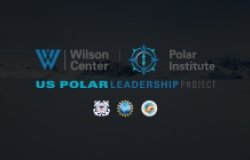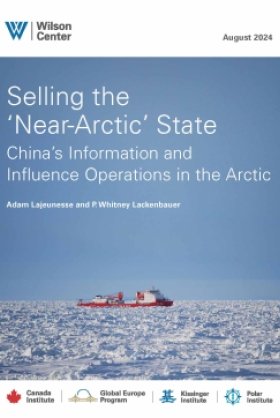The Continuing Value of Consensus-Based Decision-Making in the Antarctic Treaty System

Mike Lucibella/Public Domain
Any analysis of the current state of Antarctic diplomacy inevitably touches on the how the requirement to obtain consensus within the two main bodies of the Antarctic Treaty System (ATS) affects and indeed often hinders decision-making. Whether one views the Treaty System as adequate for purpose or unable to meet current needs[i], the consensus rule has played a central role in how the treaty parties have conducted their affairs since the Antarctic Treaty was signed in 1959 and it currently sets the boundaries for what the Treaty Parties can achieve in formal settings.
The level of frustration is rising within governments as well as civil society groups concerned with Antarctic policy as annual diplomatic meetings produce limited results on policy priorities identified by the majority of states. While Southern Ocean fisheries are managed sustainably for the most part, there has been no significant progress since 2016 on the existing commitment to establish a network of marine protected areas. Despite concerns about the rise of tourism in Antarctica, notably in relation to impacts from shipborne tourists, progress towards any sort of new regulation of tourism remains slow. Efforts to establish additional protection for the iconic Emperor Penguins remain stalled. Indeed, the ability of the Treaty System to promote the kind of science needed to understand and address climate change is uncertain.
Does this mean that the consensus decision-making system should be modified in order allow for greater action at the Antarctic Treaty Consultative Meeting (ATCM) or at the Commission for the Conservation of Antarctic Marine Living Resources (CCAMLR)? That question is being asked with greater frequency given the continual stalemates at these meetings.
Although there is cause for concern about basic efficacy of Antarctic political processes, as discussed in this article, my answer at the moment is no – tinkering with the decision-making structure is apt to cause more problems than it solves. The main reason is that the current approach to decision-making provides not just the troubled framework for resolution of environmental issues but affects the basic politics of how major states active in Antarctica interact with the ATS. Consensus brings a certain cohesion to the ATS that has allowed it to retain the support of its member states for more than fifty years. Nevertheless, there are steps, as described herein, that the parties can pursue within the current rules to increase the chances of successful policymaking.
This article stems from a presentation by the author in June 2024 at Utrecht University as part of the ProAct Antarctic Tourism Symposium. The symposium focused on ways to address rising tourism in Antarctica, and the lecture concentrated, based on the author’s experience as a former US head of delegation to the ATCM and CCAMLR, on challenges arising from consensus decision-making as well as potential options for action in case consensus cannot be reached. The faculty and students who organized and took part in the symposium as well as many guest experts brought fresh and valuable perspectives to the discussions.
The presentation in Utrecht followed the recent publication of an article in a major law journal analyzing consensus-based decision-making at the ATCM in the context of tourism (the Tourism Article).[ii] In that article, this author and colleagues addressed legal points related to the handling of tourism policies at the ATCM. The presentation at the symposium, and this article, have a somewhat wider scope, focusing as well on implications for CCAMLR and issues before the ATS generally, and solutions that may be relevant for parties in the ATS as a whole.
Challenges to Achieving Consensus
The Antarctic Treaty Consultative Meeting (ATCM) was established under the Antarctic Treaty of 1959 and the Commission for the Conservation of Antarctic Marine Living Resources (CCAMLR) was established under the CAMLR Convention of 1980. Both bodies, which meet annually, follow a strict consensus procedure whereby an objection by any Consultative Party, in the case of the ATCM, or by a Member in the case of CCAMLR, causes any proposal on a matter of substance to fail.[iii] In normal practice, votes are not taken in either body and an expression by a state representative of lack of support for a decision in a public session is sufficient for that decision not to proceed. The consensus procedure is followed by the ATCM’s and Commission’s subsidiary bodies, such as the Committee for Environmental Protection (CEP) and the CCAMLR Scientific Committee – although in the case of the CEP and Scientific Committee there is provision for experts to be able to record their views regardless of whether consensus advice is achieved. The Antarctic Treaty, its Environmental Protocol and the CCAMLR Convention, along with the measures they adopt, comprise the most important parts of the Antarctic Treaty System.[iv] Thus, in evaluating decision-making related to Antarctic policies overall, it is critical to consider both the ATCM and CAMLR Commission, not just one or the other.
Utrecht was a good location to hold a discussion of consensus-based decision-making in the ATS because it was at ATCM XX held in Utrecht in 1996 that the US presented its proposed draft for an annex to the Environmental Protocol on liability. The approach contained in that proposal, which limited liability to situations where a party failed to respond to an environmental emergency, was eventually accepted by the parties and agreed at the ATCM in Stockholm in 2005.[v] Thus, the Liability Annex is an example where consensus was realized on a major matter of policy in the ATS, demonstrating that, with sufficient time and effort, such achievements are possible.
The Liability Annex has not, however, ultimately been a total success. Nine countries have yet to approve the annex, including the United States, and as a result it has not entered into force as of 2024. Thus, nineteen years after consensus was reached, it is also an example of how long things take to get done in the ATS.
There are so many obstacles to reaching consensus at an ATCM. Part of the reason involves the natural existence of differences of view within a group of 29 countries. There are inevitable disagreements on how and whether to take action, including those that stem from the status of being a claimant or non-claimant. That isn’t to criticize the claims per se, but to point out that when a country thinks of a place as being as under its domestic jurisdiction, it will likely act with considerable care in accepting rules that apply there.
There is also the overlay of bloc politics. A recent example is that the Ukraine crisis has made it more difficult for governments on different sides of the conflict to cooperate in multiple fora, including at the ATCM and at CCAMLR.[vi] The last ATCM was hosted by India in Kochi in May 2024. That meeting failed to accomplish very much, although most of the proposals before the meeting were relatively modest. At Kochi, some new Antarctic Specially Protected Areas were designated, China again prevented Emperor Penguins from being designated as a specially protected species, Russia essentially blocked a resolution related to the new high seas treaty (BBNJ agreement), and the tourism working group made only limited progress toward developing a framework for tourism.
The consensus rule, and its apparent stifling of action, sits at the center of this lack of progress. In attempting to understand why, tourism is a good place to focus an analysis, given the importance placed by numerous consultative parties on this issue and the many years of work already put into it. There is a large, expected uptick in shipborne tourism,[vii] and it makes sense for governments to pursue additional regulations and rules. Yet we have seen many years of consultative parties talking about tourism but taking very little action, and a failure to consider the issue in a comprehensive way.
The Tourism Article mentioned above analyzes how the consensus rule has made it difficult to adopt new rules on tourism. However, the consensus rule is having an impact not just on tourism at the ATCM, but on other matters there as well.
CCAMLR has failed to make further progress on establishing a network of marine protected areas since 2016 when agreement was reached on the largest high seas MPA in the world, in Antarctica’s Ross Sea. Since then, Russia and China have combined to not only prevent new MPAs, but also to make implementation of existing ones more difficult by refusing to agree to relevant research and monitoring plans. The MPA effort is consistent with international efforts to promote ocean conservation, including the objective from the 2022 Kunming Montreal Global Biodiversity Framework to protected 30 percent of the ocean by 2030.
The Antarctic Treaty System performs relatively well when it comes to fisheries management in the Southern Ocean, in that CCAMLR is for the most part (with important exceptions[viii]) able to reach agreement on catch limits each year. Moreover, the scientific work that undergirds CCAMLR’s efforts proceeds and is taken into account reasonably well in the Commission’s decisions. Thus, the basic function of managing fishing, which is important to a large number of countries that fish in the Southern Ocean or serve as markets for imports, continues in a manner that is often considered more satisfactory than what one finds in any number of regional fisheries management organizations.[ix]
The Pros and Cons of Consensus-Based Decision-Making
Thus, the ATCM and CCAMLR are able to conduct basic business, including holding annual meetings, issuing periodic declarations on milestones like anniversaries of the conventions, sharing information on activities including scientific work and research station operations, and as noted, normally being able to agree on fisheries catch limits. But in notable areas where consensus could not be obtained, these bodies failed to take action, often in cases where there was otherwise considerable support from the international community. In certain cases, this means that important steps related to environmental protection have not been taken; in regard to fisheries management, key examples have involved countries like China and Russia blocking progress on large-scale marine protections or new rules that would strengthen conservation or sustainability of Antarctic fisheries.
The inability to take decisions with the ATS bodies has had important negative impacts. The consensus rule has, however, also brought some benefits.
One key point is that when consensus is achieved the international community (or at least that group of states that are active in Antarctica) is of one mind, and likely willing to carry out the particular policy or rule. In addition, there is a practical impact. Following a consensus procedure provides a sense of confidence to consultative parties and CCAMLR Members, particularly those with major interests in Antarctica, including investments in science infrastructure and logistics. Those states are looking to protect various interests related to their nationals. Some are protecting territorial interests, and others seek to protect the reverse – the idea that claimant states should not further or be seen to further territorial interests through ATS measures. Moreover, states with large science programs and footprints will not wish to see their programs or station operations unnecessarily impacted by international rules, particularly legally binding ones.
Countries also don’t want international organizations to adopt or announce policies with which those countries disagree, including when precedents might be set that would be relevant in other forums. During the Trump Administration, the US delegation opposed language on climate change within the ATS bodies, taking the view that international climate policy should be made at bodies like the UN Framework Convention on Climate Change. No votes were taken, but informal US objections were sufficient to affect climate references in part because all states knew the Administration’s position, and in light of the consensus rule understood there was no way to force the issue at the ATCM or CCAMLR.
Support for the consensus rule appears to be particularly important for the seven claimant states (Argentina, Australia, Chile, France, New Zealand, Norway, UK), but also the United States and Russia (which historically maintain a basis for a territorial claim), and China as an emerging force in global affairs. It is unlikely that any of these countries would be willing to undercut this right.
Russia often stands alone in ATS decision-making, especially in CCAMLR where it is comfortable taking strong stands in support of its perceived fisheries and political interests. China has increasingly found its voice in both forums over the past decade, and has shown a growing willingness to block consensus. [x]
A key reason that the United States might hold strongly to the consensus rule relates to the role of the ATS in keeping the peace, despite differences over claims, maritime rights and tensions related to geopolitics. The Antarctic Treaty System operating under the consensus rule has appeared to provide stability, even if many environmental goals aren’t yet achieved. The rule is a key form of protection for countries that may feel the need protect interests going well-beyond regional concerns. It acts as a break on detrimental decisions being taken by an organization where a country’s view is in the minority.
It is worth noting that the consensus rule also gives countries that that don’t fish in the Southern Ocean (like the United States) some leverage against fishing nations if they want to promote conservation values over fishing interests in the context of negotiating catch limits.
The impact of inaction in recent years falls mainly on issues affecting environmental protection – hence the failure to establish a network of Antarctic MPAs. The Antarctic Treaty is an instrument that was designed to deal with Cold War political pressures, is at its heart an arms control treaty and does not focus on the environment; in 1959 negotiators weren’t thinking very much about environmental protection and they certainly weren’t focused on climate change. Much has changed since then, but it is useful to acknowledge the context – that the ATS is rooted in concerns about ensuring that Antarctica remains, as the recently updated official US Antarctic policy describes it, a “zone of peace.”[xi]
The Antarctic Treaty has fostered peace for more than 60 years. It creates a certain type of cohesion, even as the world has evolved to bring additional policy concerns (such as environmental protection and sustainability) to Antarctica and many additional countries have joined the ATS. The consensus rule plays a role in that cohesion.
Notions of reforming the consensus rule are somewhat hypothetical. This is in part because there doesn’t appear to be any active interest in such reform among states parties. Moreover, any change to the consensus rule would require consensus to achieve, which is extremely unlikely to obtain. If the issue were to be pushed forward by states or other stakeholders, a question would be whether the threat of changing the rule or an actual change could cause some states to rethink their commitment to the ATS as a whole. If states feel as if their policy interests aren’t going to be protected, might they start to ask if parts of the basic commitments within the ATS are worth preserving?
The Tourism Article explores possible changes and exceptions to the ATCM consensus rule, beyond the one for report adoption. Parties that support the consensus rule are not likely to find these exceptions particularly attractive: voting by simple or qualified majority or an “all-but-one” option probably would not find favor among key states. For tourism, why would the US, which has the most tourists and regulates the most tour expeditions, want to give up its leverage? On the CCAMLR MPAs, it is not just one but two countries that regularly assert a veto.
It also bears emphasizing that, as noted above, the ATS has had notable success with respect to environmental issues even with its existing rule structure. It reached agreement on the Liability Annex in the ATCM, and it has been able to establish marine protected areas, including the world’s largest, in the Ross Sea, in 2016.
Hence, when weighing the benefits of keeping the consensus rule with removing it, in current circumstances keeping it is the better answer.
Steps to increase effectiveness of the ATS short of changing the rule of procedure
There are steps that governments can take to further desired policy goals within the ATS short of modifying the consensus rule. One straightforward solution is to put greater energy and resources into their Antarctic diplomatic efforts – in other words, trying harder to convince objectors. This was an approach that worked for New Zealand and the United States when they made a concerted effort to gain support for the Ross Sea Region MPA. In that case, this included multiple visits by expert teams to capitals and use of diplomatic channels, as well as ministerial-level contacts, over a period of five years. It is important that Antarctic diplomacy not be confined to annual ATCM and Commission sessions and preparations for those sessions, but involve additional engagement that goes well beyond contact groups and meetings of scientific subsidiary bodies.
The need for greater effort applies not just to new or high profile initiatives but to pressing governments to approve (ratify) ATCM measures after they’ve been adopted. If entering into force Annex VI on liability is a priority for governments, they should be advocating for this not just in the plenary of the ATCM but through diplomatic channels intersessionally.
The parties can also convene more meetings of experts or similar sessions focused on particular topics. This is a variant of the “work harder” model, and is especially important when waiting for annual meeting cycles isn’t efficient given the urgency to deal with particular questions. Of course, standard formats, such as the ATCM Intersessional Contact Groups (ICGs), are also available. These tend to be particularly disappointing in the context of the ATCMs, where establishment of an ICG usually leads to an exchange of views among only a handful of states and observers and little concrete progress. Things are a bit better within CCAMLR, where scientists take intersessional responsibilities more seriously.
ATS parties can also resolve to give more attention to Antarctic issues in diplomacy. Attention in capitals may be less of a problem in the Southern Hemisphere, but in the case of the United States there is little high-level political attention. If the US and others gave greater priority to diplomatic issues affecting Antarctica, there would be a greater chance of overcoming obstacles at the ATCM and CAMLR Commission. The US could learn something from the claimant states in particular, where Antarctica ranks higher on the list of public policy priorities.
Countries active in Antarctic affairs can also give greater emphasis to the obligation to make best efforts to achieve agreement and cooperate at ATS meetings. In this context, Australia made a particularly effective intervention in the ATCM plenary in Kochi during discussion of a paper presented by Russia on “The contribution of the ATS to strengthening the principles of a multipolar world order.” The Russian paper repeatedly noted the importance of consensus. The head of the Australian delegation insisted that the ability to withhold consensus wasn’t just a right but carried with it an obligation to work toward common ground. As the Tourism Article makes clear, there is a legal basis for the proposition that consensus-decision making requires negotiations in good faith, and that such negotiations must be “meaningful”.[xii] It further noted that “the consensus rule within a legal regime established by a treaty must . . . be implemented within an emerging international law of positive cooperation among the regime members.”[xiii]
States can also act unilaterally to accomplish policy objectives within their domestic jurisdiction where joint steps cannot be agreed. This can take a number of forms. For example, the United States listed emperor penguins as protected under its domestic law; it did not wait for the ATCM to act.[xiv] The United States also designated Russia under its fisheries law for its illegal, unreported and unregulated (IUU) activity related to one of its flagged vessels, The Palmer, in the absence of CCAMLR listing the vessel as IUU (the listing by the Commission was, unsurprisingly, blocked by Russia).[xv]
Beyond states acting unilaterally, countries also have the capacity to act as a group, e.g., they could pledge not to fish in designated areas within the CAMLR Convention Area, with the obvious downside that other countries who do not join this group may fish or undertake other behavior that undermine the objective.
Conclusion
There is a tremendous amount of frustration with the Antarctic Treaty System and its chronic inability to take actions desired by a majority of states parties to both the Antarctic Treaty and CCAMLR regimes. The legal requirement to find a consensus solution is often too high a bar for progress on important issues, especially on matters related to environmental protection.
At the same time, even for many states that clearly want to avoid stalemate on such issues, the consensus procedure followed within the ATS is seen as advantageous. The ATS continues to serve the international community through supporting regional peace and security, providing for an effective demilitarization regime, allowing national science programs to flourish, and encouraging regulation of fisheries that are managed more sustainably than in many other places. In the context of security, the Treaty System successfully manages the divergent interests of states with and without territorial claims. The consensus rule has, at the very least, not undermined these positive aspects of Antarctic governance. And states with global political and security interests take some comfort in having a ready veto to prevent decisions that they oppose. Indeed, by contributing to the stability and cohesion of the regime, the consensus rule makes it more likely that countries will continue to support the ATS.
And thus, as things stand, and despite the frustrations, undoing the consensus rule should be a last resort. Instead, states should recommit to the hard work of making Antarctic diplomacy more meaningful through increased efforts.
[i] M. Boulègue and K. Dodds, “Antarctic Diplomacy in a BRICS+ World”, Wilson Center, July 3, 2024 (“[The annual Treaty meeting in Kochi] revealed yet again the sclerotic state of Antarctic Treaty governance.”)
[ii] K. Bastmeijer, A. Shibata, I. Steinhage, L. Ferrada, and E. Bloom, “Regulating Antarctic Tourism: The Challenge of Consensus-Based Decision Making,” 117 Am. J. of Int’l Law 651 (2023). Other articles have focused on decision-making in CCAMLR. See, e.g., Goldsworthy L., “Consensus decision-making in CCAMLR: Achilles' heel or fundamental to its success?,” Int Environ Agreem. 2022;22(3):411-437.
[iii] Rules of Procedure of the Antarctic Treaty Consultative Meeting (2023), The consensus rule was made explicit in Rule 23 of the Rules of Procedure of the Antarctic Treaty Consultative Meeting adopted in 1961: “Without prejudice to Rule 21, Measures, Decisions and Resolutions, as referred to in Decision 1 (1995), shall be adopted by the Representatives of all Consultative Parties present and will thereafter be subject to the provisions of Decision 1 (1995).” (Now Rule 24 in the current, 2023 version of the Rules). Meeting reports can be adopted by a majority of representatives. (Rule 25). For the CCAMLR Commission, Rule 4(a) of its Rules of Procedure reads in relevant part “Decisions of the Commission on matters of substance shall be taken by consensus. The question of whether a matter is one of substance shall be treated as a matter of substance.”
[iv] The term “Antarctic Treaty system” is defined in the Environmental Protocol to the Antarctic Treaty: “’Antarctic Treaty system’ means the Antarctic Treaty, the measures in effect under that Treaty, its associated separate international instruments in force and the measures in effect under those instruments.” Article 1(e), Environmental Protocol.
[v] ATCM Measure 1 (2005).
[vi] E. Bloom, "Ukraine Conflict Likely to Intrude on Antarctic Diplomacy", Wilson Center, May 15, 2024.
[vii] ATCM 46, IP102 rev. 1, IAATO Overview of Antarctic Vessel Tourism: The 2023-24 Season, and Preliminary Estimates for 2024-25.
[viii] A major recent failure to agree on a catch limit in CCAMLR involved Russia blocking agreement on one for Subarea 48.3 and the UK proceeding to fish regardless. See B. Arpi and J. McGee, “Fishing around the South Georgia Islands and the ‘Question of the Falklands/Malvinas’: Unprecedented challenges for the Antarctic Treaty System,” Marine Policy 143:105201 (Sept. 2022).
[ix] Because of its broad conservation mandate, CCAMLR does not consider itself to be a “regional fisheries management organization.” See Memorandum from CCAMLR Secretariat to the UN Division for Ocean Affairs and Law of the Sea, 6 Feb. 2019.
[x] Regarding Russia and China, see discussion in E. Bloom, “Special Report, Meeting Antarctica’s Diplomatic Challenges: Joint approaches for Australia and the United States,” Australian Strategic Policy Institute, Feb. 2022.
[xi] National Security Memorandum on United States Policy on the Antarctic Region, NSM-23, White House, May 17, 2024.
[xii]Supra note 2 at 671.
[xiii]Id.
[xiv] “U.S. Fish and Wildlife Service Provides Endangered Species Act Protections for Emperor Penguin,” Press Release, U.S. Fish and Wildlife Service, Oct. 25, 2022.
[xv] NOAA Report to Congress on improving international fisheries management, August 2023.
About the Author

Evan T. Bloom
Former Acting Deputy Assistant Secretary for Oceans and Fisheries and Director for Ocean and Polar Affairs, US Department of State

Polar Institute
Since its inception in 2017, the Polar Institute has become a premier forum for discussion and policy analysis of Arctic and Antarctic issues, and is known in Washington, DC and elsewhere as the Arctic Public Square. The Institute holistically studies the central policy issues facing these regions—with an emphasis on Arctic governance, climate change, economic development, scientific research, security, and Indigenous communities—and communicates trusted analysis to policymakers and other stakeholders. Read more













